You notice that the water in your salt tank is a little higher than normal but you’re not sure if you have seen it at that level before. Should the water be at that level, how much salt should I put in, and how does a water softener salt tank work anyway?
A water softener salt tank holds sodium which the water softener adds water to, which creates brine. The water softener then uses the brine from the salt tank to regenerate its water-softener resin. The float in a brine tank is used to stop the brine tank from overfilling.
The brine tank of your water softener is a relatively simple device but letting it run low on salt or allowing it to get too dirty on the inside can cause your water softener to not work well enough and can even cause the brine tank to overflow.
Understanding how your water softener brine tank works will help you to keep it in good shape so that it’ll continue looking for many years.
What does a water softener brine tank do and why?
A water softener salt (brine) tank works by storing salt that is dissolved by water that is put in by the water softener. The dissolved water known as brine is used by the water softener to regenerate the water-softening resin inside the water softener tank.
Check out this quick video about how a brine works with a water softener.
An overflow safety float is used in the brine tank to ensure that the level of water does not go above the designated level for the size of the brine tank to prevent the water from overflowing.
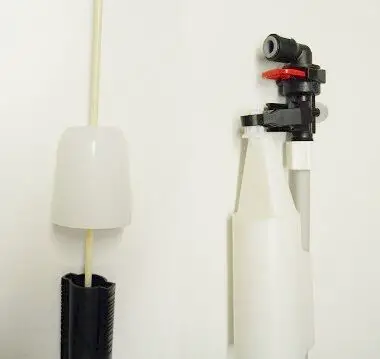
The brine tank overflow float is not as complicated as it might appear to be. This float is simply a shut-off mechanism to prevent excessive water from going into the brine tank and causing it to overflow.
The brine float in a standard water softener is simply a plastic float that is connected to a rubber seal that opens and closes to allow water in and out of the water softener brine tank.
Does my water flow through my water softener brine tank?
This is a common misunderstanding about what happens in a water softener brine tank.
Many people believe that the water for their home flows through their water softeners brine tank and that is where their water becomes soft. That couldn’t be farther from the truth!
At no time does the water that you use in your home flow through your water softener brine tank!
The water that you use in your home goes through the water softener tank to soften your water and not your brine tank.
The brine tank of your water softener is simply a container that your water softener adds water to in order to dissolve a set amount of salt that is kept in the tank so the water softener can use the salt water (brine) to regenerate (clean) the water softener resin inside of the water softener tank so that the resin can remove more hardness from your water.
This process is called “Ion Exchange”.
Picture the brine tank of your water softener as being like a glass full of salt.
Then pour some water into the glass and let it sit for a few hours so that the water can dissolve as much salt as it possibly can (This salt water is the brine that the water softener will use to regenerate its water softener resin).
Then pour the saltwater out of the glass and leave the undissolved salt behind in the glass.
You have just performed the same general function as a water softener brine tank.
How does my brine tank know how much water should be in it?
A standard electric water softener will put a pre-programmed amount of water into your brine tank based on the dose of brine that it will need to regenerate its water softener resin to properly remove the amount of hardness in your water.
See my article How much salt does a water softener use?
A standard electric water softener also has a secondary brine float to prevent your water softener from putting too much water into your brine tank.
Non-electric water softeners do not have this capability because they do not have any programmability.
A non-electric water softener relies on a single float to shut off the water going into the brine tank because, without electricity, there is no way to program it to put a predetermined amount of water into the brine tank.
See my article “Electric vs NON-Electric water softeners, which is better“
For the most part, the brine float on a non-electric water softener will shut off the water going into the brine tank just fine.
But since the brine float is the only method that a non-electric water softener uses to regulate the amount of water in the brine tank, if the brine float fails, sticks, or gets some dirt on the rubber shut-off seal, the water softener will not know to stop filling the brine tank and the brine tank will overflow.
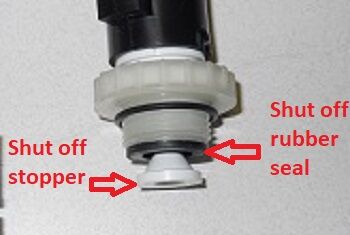
Does my salt tank need to be full of salt all of the time?
A water softener will use a pre-determined dose of salt each time that it regenerates its water softener resin.
In many cases, a water softener will only use between 6 and 12 pounds of salt each time that it regenerates. Depending on the size of your brine tank, this may mean that your water softener will only use a few inches’ of salt from your brine tank each time it regenerates.
Since the water softener puts water into your brine tank from the bottom and draws the brine that is created from the bottom of the tank, you only need to have enough salt in your brine tank so that the level of salt is higher than the level of water.
For most brine tanks, I recommend adding salt when the level of the salt goes below the level of the water or when the salt goes down to 1/3 the height of the brine tank.
Fill your brine tank up to about 2/3 of the way up the tank and do not overfill your brine tank.
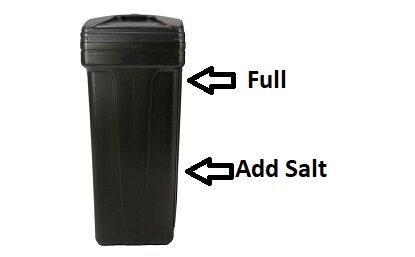
You do not have to constantly top off your water softener brine tank, but you should never let your water softener run out of salt!
Fill your water softener’s brine tank like you would fill the gas tank in your car. You don’t have to keep it full all of the time, but you NEVER want to let it become empty!
How much salt needs to be in my salt tank for it to work?
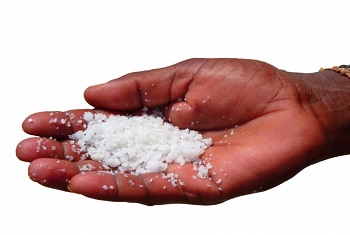
There needs to be enough salt in a water softener brine tank to create enough brine for the water softener to regenerate its water softener resin.
As a basic rule of thumb, you should keep the level of salt in your brine tank above the level of water in your brine tank. This is the minimum amount of salt required to create the proper amount of brine for the water softener to regenerate its water softener resin.
The amount of salt needed in your brine tank will depend on how hard your water is, how much iron is in your water, how much resin is in your water softener, and how often your water softener regenerates.
The amount of salt that your water softener will use is a predetermined amount based on how much water softener resin needs to be regenerated in order to soften your water.
A small dose of brine from your brine tank will only regenerate a small amount of water softener resin. A large dose of brine will be able to regenerate more water softener resin and therefore your water softener will not have to regenerate as often.
A properly programmed water softener will use enough salt to regenerate enough water softener resin to soften your water without using too much water or salt to do so, but not so little salt where the water softener has to regenerate very often.
Will my brine tank still work when there is no salt in it?
Without sodium to perform the process of ion exchange, a water softener is not able to regenerate its water softener resin which means that the water softener resin will not be able to remove hardness from your water.
Letting your water softener run out of salt can cause hard water stains on your water fixtures, shower walls, and even cause your hot water heater to work less efficiently due to hardness build-up.
Always keep a few extra bags of water softener salt available, just in case you notice that your water softener has run low on salt to prevent hard water from getting into your home.
Does a brine float need to be maintained?
Most water softener manufacturers recommend cleaning your water softener brine tank yearly to ensure that it functions correctly.
Although, cleaning your brine tank float yearly is certainly not a bad idea, in many cases, maintaining your brine tank float is something that is only needed every several years unless your brine tank gets very dirty or it has to regenerate very often.
Because the brine float assembly in a water softener brine tank is a very simple device that simply opens and closes, there is very little that has to be done to maintain it.
For the most part, the brine float assembly just has to move freely and properly seal to function properly.
A properly working brine float very important on a non-electric water softener since the brine float assembly is the only way that the water going into the brine tank will shut-off and not continue filling until the brine tank overflows.

To maintain a brine float assembly on an electric or non-electric water softener, you need to make sure that the rubber seal that stops the water filling the brine tank is clean and seals well when closed.
Bypass your water softener to stop water from going through the brine float assembly. Carefully remove the brine float assembly from the brine well for cleaning.
Use a lint-free cloth to gently clean the surface of the rubber seal so that it glides smoothly over the surface of the brine float tube.
Should I use a lubricant on my brine float assembly?
Do not use any lubrication or chemical cleaners as they might cause the seal to stick or corrode, just some clean water to rinse the seal after you wipe it clean will be fine.
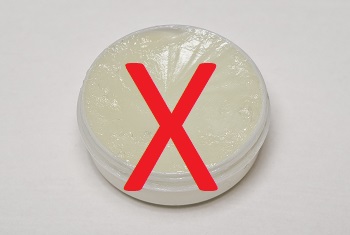
You should only use clean water to clean the moving parts of a brine float assembly. The moving parts on a brine float are designed to work best just by being clean.
After you have maintained your brine float assembly, carefully re-insert it into the brine well and put your water softener back into service.
Keep an eye on the water level in your brine tank to make sure that the water level is not rising which could mean that the brine float is not shutting correctly.
If you find that the water does not shut off to the brine tank after a short while, remove the float assembly and check for dirt or debris preventing it from shutting off.
Do I need to clean my brine tank?
Cleaning your brine tank will help prevent your float assembly from getting dirty, keep dirt from getting into your water softener, and help to prevent salt bridges.
By simply wiping down the walls of your brine tank before you add salt to the tank will help keep dirt from settling at the bottom of the brine tank which means less dirt that can get into your water softener.
When does a water softener brine tank need to be replaced?
A brine tank is made of very durable plastic and will last for many years without the need for replacement.
Providing that the floor where the brine tank sits is clear of objects that may puncture the tank and the walls of the tank do not get punctured or damaged, your water softener brine tank will usually outlast the water softener itself.
Do all brine tanks work the same?
The brine tank of a water softener is simply a container to hold the salt that the water softener will use to create a brine. The water softener will put clean water into the brine tank and then the water softener will draw the brine out of the brine tank to regenerate its water softener resin.
A brine tank will have a shut-off float assembly to prevent the water from overflowing out of the brine tank, and most brine tanks work pretty much the same way.
Although the water softener tank is where your water actually gets softened, your water softener can’t soften your water without a properly working brine tank.
Never let your water softener brine tank run out of salt, give your brine tank a quick cleaning whenever you add salt to it and check your brine float assembly from time to time and your water softener brine tank will work well for many years.


